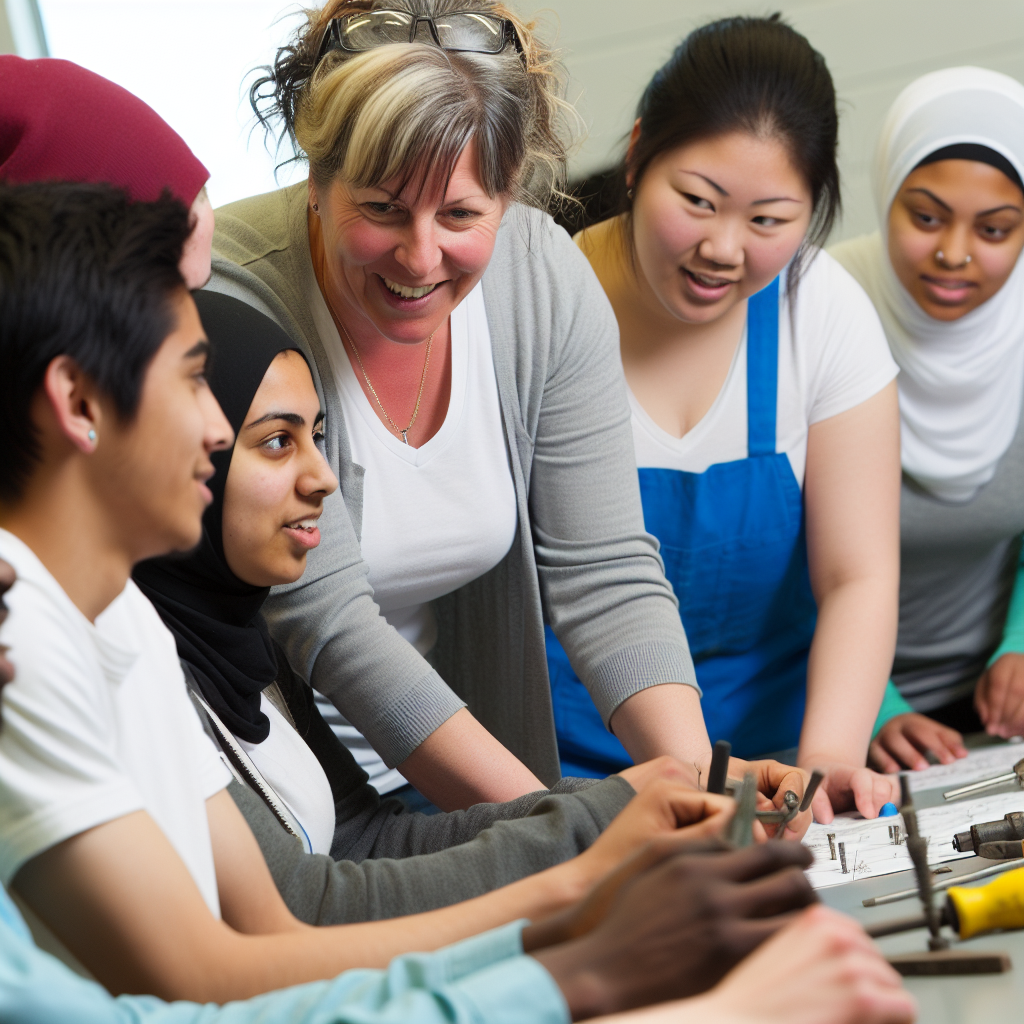Vocational Education In Schools, Enabling Teachers With Quality Programs And Support, Equipping Students With Skills To Navigate A Successful Future.
Press play below to listen to this blog:

Discover how vocational education is transforming schools, empowering educators, and equipping students for a successful future in a rapidly changing world.
The Role of Vocational Education in Modern School Curriculums
Vocational education is becoming an essential part of modern school curriculums, providing students with practical skills and knowledge that prepare them for the workforce. Unlike traditional academic paths, vocational training focuses on hands-on experience, ensuring that students gain the competencies needed for specific trades and professions.
Integrating vocational education into school curriculums not only addresses the skills gap in various industries but also offers an alternative pathway for students who may not thrive in conventional academic settings. This approach helps in creating a more inclusive education system that caters to diverse learning needs and career aspirations.
Empowering Educators: The Key to Successful Vocational Programs
The success of vocational programs largely depends on the quality of educators and the support they receive. Empowering teachers with professional development opportunities, updated curriculum resources, and modern teaching tools is crucial for delivering effective vocational education.
Schools should invest in continuous training for vocational educators to keep them abreast of the latest industry trends and technological advancements. This ensures that they can provide students with relevant and up-to-date knowledge, making the transition from classroom to workplace smoother and more efficient.
Bridging the Gap: Vocational Training and Real-World Applications
One of the primary goals of vocational education is to bridge the gap between academic learning and real-world applications. By partnering with local businesses, industries, and community organizations, schools can offer students opportunities for internships, apprenticeships, and hands-on projects.
These real-world experiences not only enhance students' practical skills but also provide valuable insights into the day-to-day operations of their chosen fields. This connection to the professional world helps students make informed career choices and builds a network of industry contacts that can be beneficial in their future job searches.
Student Success Stories: From the Classroom to the Workforce
Numerous success stories highlight the impact of vocational education on students' lives. Many students who have participated in vocational programs have gone on to secure rewarding careers in various trades and professions, demonstrating the effectiveness of hands-on learning and industry partnerships.
These success stories serve as inspiration for current and prospective students, showing that vocational education can lead to fulfilling and lucrative career opportunities. By sharing these stories, schools can promote the benefits of vocational training and encourage more students to consider this educational pathway.
Future Trends in Vocational Education: Preparing for the Jobs of Tomorrow
As the job market continues to evolve, vocational education must adapt to prepare students for the jobs of tomorrow. Emerging technologies, such as artificial intelligence, automation, and renewable energy, are creating new career opportunities that require specialized skills and training.
Future trends in vocational education will likely focus on incorporating these emerging technologies into the curriculum, ensuring that students are equipped with the knowledge and skills needed to thrive in a rapidly changing world. By staying ahead of industry trends and continuously updating vocational programs, schools can ensure that their students are prepared for the future workforce.


